Thanksgiving seems a good day to rank the films of John Hughes. Not only did he write two Thanksgiving films but he also penned four Christmas films. And Turkey Day is about family gatherings, another genre he specialized in. Plus we’re in the midst of a school year, and Hughes practically invented the modern high school movie. So here goes: my ranking of Hughes’ films (w = writer, d = director, s = story only), from worst to first. (Click on each title for my full-length review.)
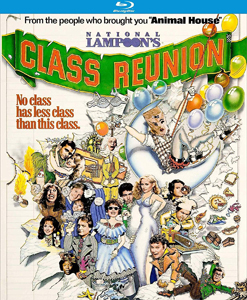
N/A. “National Lampoon’s Class Reunion” (1982, w)
I haven’t seen Hughes’ first credit as it is not streaming anywhere, even for a price. By all accounts it’s terrible and would not challenge for a substantial position in these rankings. If I do see it someday, I’ll update this list.
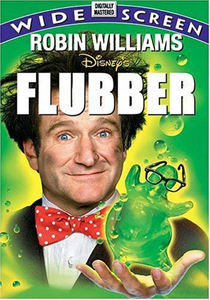
31. “Flubber” (1997, w)
Hughes’ name is on this remake of “The Absent-Minded Professor,” but his heart isn’t in it. This is one of those Nineties special-effects showcases where the effects are good but they are displayed in blocked-off, dark frames to accommodate the state of the art at the time. A basketball-game sequence showcasing the titular bouncy material is a highlight. But everything else is bland, including the legendary Robin Williams. He plays a scientist who forgets to attend his wedding three times. You’d think after the first instance, someone would be tasked with making sure he shows up. Unlike his wife, this dud of a movie deserves to be left at the altar.
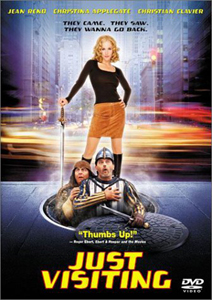
30. “Just Visiting” (2001, w)
Most of Hughes’ remake work is probably for a paycheck, rather than passion. But this one strikes me as particularly phoned-in. Chronicling accidental time-travelers from medieval France, “Just Visiting” is toned as a comedy, but it’s never inspired. The humor stays at the level of the time-travelers washing their faces in a toilet. Tara Reid pairing with Christian Clavier (who is much older and poor and a slob) is the least believable romantic match this side of your understaffed community theater.
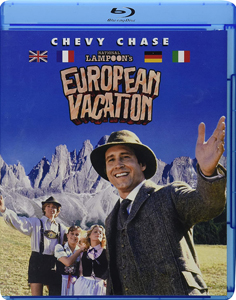
29. “European Vacation” (1985, w)
Hughes was distracted by other projects, but National Lampoon was gonna make this sequel anyway, so he contributes as a co-writer. Although the title suggests an ambitious followup to the classic from two years prior, it’s cheaper and drabber. Even the Griswold family warmth is gone. A few gags land, including Clark (Chevy Chase) continually injuring Eric Idle’s cyclist in a leftover “Monty Python” bit. From a wider comedic lens, the cultural stereotypes are in place, but that actually makes them unfunny.
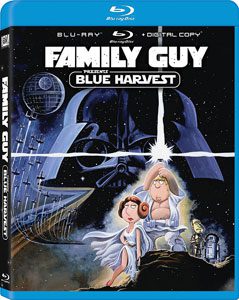
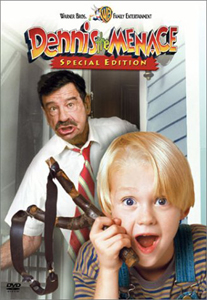
28. “Dennis the Menace” (1993, w)
The best I can say about this mediocrity is that Walter Matthau and Mason Gamble look and act the parts of Mr. Wilson and the titular rapscallion who lives next door. Hughes seems to draw from discarded portions of “Home Alone” drafts as Mr. Wilson is perpetually hit in the balls by accidental projectiles. If you have to watch “Dennis the Menace,” it’s not as painful as what Mr. Wilson endures. But not by much.
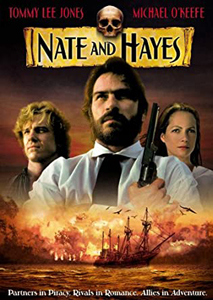
27. “Nate and Hayes” (1983, w)
Hughes is a hired co-writer on his only period piece, a 19th-century attempt at an “Indiana Jones”-style franchise. Also known as “Savage Islands,” it might interest “Pirates of the Caribbean” fans or to Hughes nerds. Or maybe not. This film is referenced so little that I worry that it was written by a different John Hughes and I’m a fool for including it on this list. The South Pacific looks spectacular, Tommy Lee Jones stands out among a cast you otherwise haven’t heard of, and the film doesn’t embarrass itself despite its confusing plot. It’s a lazy afternoon throwaway.
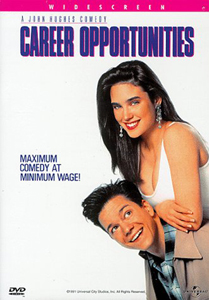
26. “Career Opportunities” (1991, w)
This is the weakest of Hughes’ three 1991 movies exploring differences between the rich and poor. Not aiming for big laughs, “Career Opportunities” starts as a character study of Frank Whaley’s Jim, an uncool answer to Ferris Bueller who can’t get his act together. On his first shift as a Target janitor, he gets trapped overnight with morose rich girl Josie (a peak-hotness Jennifer Connelly). An empty big-box store is an evocative setting, and Hughes realizes the unlikely romance needs to be sealed with a life-or-death situation. But when the thief-invasion plot takes over, the nuances of the youths’ lives go out the window. The film doesn’t live up to its opportunity to be special.

25. “Beethoven” (1992, w)
Slightly before the digital-effects era, we get one last blast of a family comedy driven by a live-action dog. Hughes didn’t want a credit (he uses the Edmond Dantes pseudonym for the first time), and he’s only the co-writer anyway. Maybe that’s why it’s light on pratfalls despite having a raft of anti-dog villains (including a pre-“X-Files” David Duchovny!). Charles Grodin (“Midnight Run”) keeps this lightweight romp watchable. He’s perfect as the put-upon dad who is annoyed by the titular Saint Bernard but in the end can’t resist the big galoot.
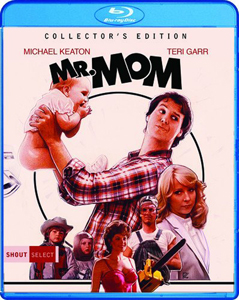
24. “Mr. Mom” (1983, w)
This film stands as a precursor to all those idiot-dad sitcoms. Michael Keaton’s comedic talents are clear, and his relationship with wife Teri Garr is sweet. But it’s ridiculous that Jack is so helpless with domestic chores that we have to conclude he would be dead if he didn’t have a wife. Hughes usually examines real life in his Eighties work, but he’s not interested in that here. Although it has some good setups in a vacuum (including one with a vacuum), “Mr. Mom” is most notable as a project where rough ideas for better films (“Uncle Buck,” “Home Alone”) percolate in Hughes’ mind.
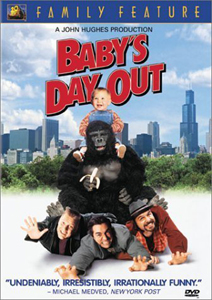
23. “Baby’s Day Out” (1994, w)
This is one of those Nineties films that tries a wild premise because post-“Jurassic Park” special effects technology made it filmable. Indeed, the composited shots of Baby Bink (twins Adam and Jacob Worton) obliviously crawling amid traffic and skyscraper construction look real. This also makes “Baby’s Day Out” terrifying, even if you aren’t the parent of a baby. So Bruce Broughton uses a playful score to consistently remind us it’s only a movie. Joe Mantegna gamely leads a trio of kidnapping stooges who endure Hughesian abuse. It’s a remarkable achievement to make a watchable movie where a baby is the main character.
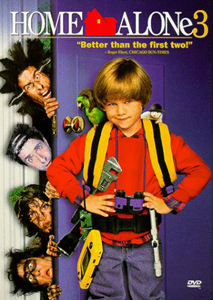
22. “Home Alone 3” (1997, w)
Hughes repurposes early drafts of “Home Alone” for a third entry that’s most famous for getting a thumbs-up from Roger Ebert after he gave the first two a thumbs-down. Although it’s not as bad as one might assume, I wouldn’t go so far to say this is the elite entry. The weightiness of being left alone is absent. Alex, played by Alex Linz, is on his own for short stretches, not an entire vacation. And the bumbling quartet of thieves aren’t in the league of Joe Pesci and Daniel Stern. Although it’s still too violent for young viewers, this is a cozier film where a mom’s concern for her chicken-pox-addled child easily outstrips distractions from her job.
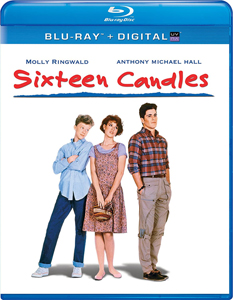
21. “Sixteen Candles” (1984, w-d)
In his directorial debut, Hughes establishes high school tropes he’ll use for the next several years until they become shopworn. Through ennui-laden voiceovers from Sam (Molly Ringwald), he lays the groundwork for “My So-Called Life” a decade later. And he smartly parodies this film’s American teens by showing exchange student Long Duk Dong (movie-stealing Gedde Watanabe) loving every minute of the high school experience. So why is “Sixteen Candles” not higher on the list? Because it’s not well written. Sam disappears for a long stretch, her relationship with an obviously older guy is skeevy, Anthony Michael Hall’s adventure with a hopelessly sloshed girl is weird and dull, and the grand finale doesn’t focus on the main characters.

20. “101 Dalmatians” (1996, w)
Now my rankings hit a stretch of three films that are successful at their aims – but there’s nothing wildly Hughesian about them. “Dalmatians” is structurally confused: The first half is a sweet romance where Jeff Daniels and Joely Richardson come together thanks to their pups. Then they almost disappear and animated animals take the spotlight in a fight against Cruella DeVil (Glenn Close) and some Wet Bandits knockoffs. The CGI animation is excellent for 1996, but it’s clear that integration of animated dogs with actors in a moving shot was a little out of reach.
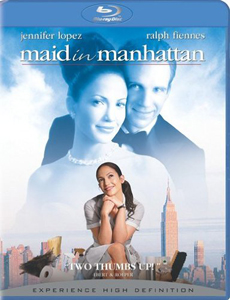
19. “Maid in Manhattan” (2002, s)
This likable rom-com, which comes from one of those “Dantes” stories, is lifted by good chemistry between Jennifer Lopez and Ralph Fiennes. They overcome their class divide in sweetly predictable fashion. Because it doesn’t have any outright villains, “Maid” is tame and inoffensive. Hughes’ original vision had the story taking place in 1920s Chicago, which would’ve made it a rare period piece from him. He probably would’ve delved into the class issues more and not come up with such pat answers.
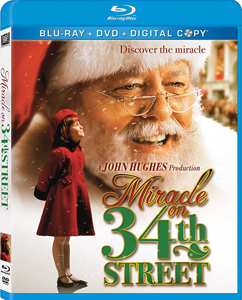
18. “Miracle on 34th Street” (1994, w)
Hughes lightly updates the 1947 classic, but the spirit of the season remains in place as “Jurassic Park’s” Richard Attenborough takes his seemingly ordained turn as Santa Claus. If you’re a fan of Hughes’ other holiday films but want to screen something safe for older or younger family members, this is your ticket. The will-they-or-won’t-they drama between Dylan McDermott and Elizabeth Perkins is mild, and there’s never any mystery about the white-bearded man’s identity. But the courtroom drama over Santa’s existence might nonetheless warm your heart like it does little Mara Wilson’s.

17. “Dutch” (1991, w)
Hughes returns to the “Planes, Trains and Automobiles” formula of a home-for-Thanksgiving journey gone awry. The drama far outstrips the comedy this time, largely because Doyle (Ethan Embry, in the opposite of the sweet-guy type he’d later cultivate) is a consistent pain in the butt to stepfather Dutch (Ed O’Neill, carrying the film). When it does do comedy, it can be great: Witness Dutch’s cot gradually collapsing in the homeless shelter, leading to increased shushing. As in “Career Opportunities” and “Curly Sue” from the same year, Hughes (now loaded with “Home Alone” cash) struggles to say something about the dignity of the downtrodden.
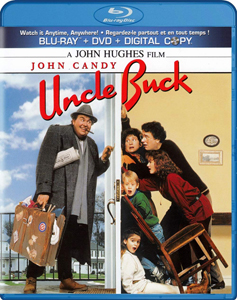
16. “Uncle Buck” (1989, w-d)
The weakest of Hughes’ three John Candy collaborations, “Uncle Buck” is too dark and not funny enough. The title character is tasked with babysitting his nieces and nephew, and the oldest, Tia (Jean Louisa Kelly), immediately tears into him. We obviously side with Buck, but he likewise goes dark, threatening Tia’s boyfriend with a hatchet. Meanwhile, Buck’s inability to do basic household tasks (that even a bachelor should know how to do) is an absurd return to that “Mr. Mom” trope. On the bright side, “Uncle Buck” earned Macaulay Culkin his classic “Home Alone” role, and Laurie Metcalf steals scenes as a desperate bachelorette with eyes for Buck.
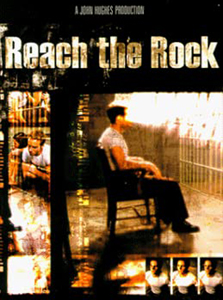
15. “Reach the Rock” (1998, w)
Fans sometimes mull the idea of a “Breakfast Club” sequel, but since that won’t happen, “Reach the Rock” – written a decade before it got made — stands as an interesting curiosity. Alessandro Nivola’s Robin could be a still-floundering John Bender a decade down the road. He toys with the Shermer, Ill., police sergeant (“Roswell’s” William Sadler) for laughs. Nivola and Sadler are magnetic as they antagonistically chat through the bars and Hughes gradually teases out their secrets. This is a good stage-style screenplay. As an overall product, it’s hurt by William Ryan’s stiff direction, a rock-bottom budget and the lack of a great music cue.
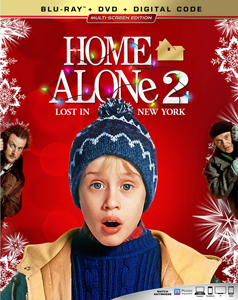
14. “Home Alone 2: Lost in New York” (1992, w)
When I hear of young kids watching the “Home Alones,” I cringe most when thinking about this one. Granted, Stern and Pesci are so good at physical comedy that I still laugh. But if the original toes the line, this one crosses into “too violent.” Harry gets concussed enough from flying bricks to have brain damage if this was real (if he somehow survived). Also problematic: The sequel finds nothing – funny or otherwise — for Kevin’s family to do in Miami. Yet there is something memorable about “HA2,” and that’s the foreboding Big Apple winter under the lens of Julio Macat. The pigeon-lady subplot is controversial for being dull, but it does feature a great kids’ lesson, one that Kevin grasps on his own this time: Not all strangers are his enemy, even if they initially seem scary.
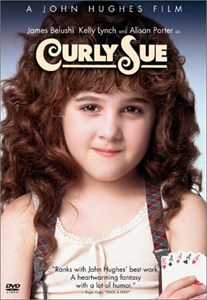
13. “Curly Sue” (1991, w-d)
The last of Hughes’ eight films as a director is the weirdest. Featuring gorgeous cinematography showing Chicago’s rich and poor sides, “Curly Sue” is visually grounded and includes realistic problems such as the danger of Bill (Jim Belushi) losing his titular daughter (adorable Alisan Porter) to the state. Yet it requires a leap of fantasy to imagine they’ve been living on the streets, unmolested by authorities, for the first nine years of Curly Sue’s life — all while following a “no stealing” edict. “Curly Sue” is like a non-sitcom “Punky Brewster” combined with a gender-swapped “My Fair Lady.” It can’t be taken seriously for a moment, but it’s strangely compelling: As we wait for the film to find its identity, we – like Kelly Lynch’s Grey — fall for this lovable duo.
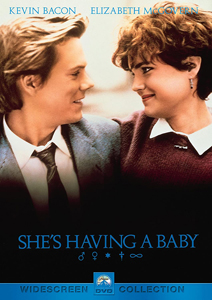
12. “She’s Having a Baby” (1988, w-d)
Although it takes a while to find its footing, this film can be treasured as the entry that bridges Hughes’ teen-focused era and family-focused era. It’s all about Kevin Bacon’s Jake stressing over his purpose and value as wife Kristy (Elizabeth McGovern) prepares to have a baby. The birth comes at the end, so all the clichés become fresh because we like Jake by that time. Before that, “She’s Having a Baby” tries interesting things like a musical aside featuring lawnmowers, a dream sequence with Jake’s sexy alternative to Kristy, and a visit from a peak-sexiness Alec Baldwin as Kristy’s alternative to Jake. This isn’t quite a great movie, but it’s a fascinating experiment.

11. “Weird Science” (1985, w-d)
Less polished than Hughes’ other teen classics, “Weird Science” might nonetheless be the one he had the most fun making. When a piano flies through a ceiling and levels a gazebo, he’s parodying the wild parties from his non-supernatural films. The idea of making nerds into heroes isn’t original, but this attempt gets a nod over “Revenge of the Nerds,” another mid-’80s classic that fails to meet every political correctness standard. Hall proves he can lead a film, and the less-known Ilan Mitchell-Smith makes a fine wingman. In a supporting turn as Hall’s terrifying older brother, Bill Paxton hilariously improvises and earns his classic “Aliens” role.
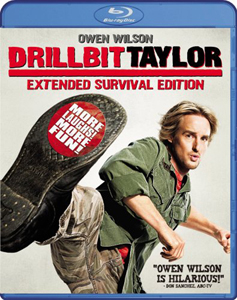
10. “Drillbit Taylor” (2008, s)
Hughes kept to his inner circle and didn’t directly train the next generation of comedy writers. In bonus features on the DVD, Seth Rogen and Kristofor Brown don’t even mention that their screenplay builds from a story by Hughes (going by Dantes). Still, “Drillbit” is as close as we’ll get to Hughes, who died one year later, handing off the reins. Led by a lovably ridiculous Owen Wilson (check out Drillbit’s botched monolog stolen from “Blade Runner”), this is a smart and funny commentary on teen bullying. It acknowledges that violence is the only language bullies understand, yet it’s about more than revenge. Accidental or not, DNA from “Weird Science” and “Some Kind of Wonderful” seeps in.
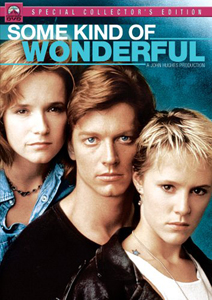
9. “Some Kind of Wonderful” (1987, w)
This should play as a ripoff of “Pretty in Pink,” which came out one year earlier and was likewise helmed by Howard Deutch. But it’s a little different because of the less blunt vulnerability of all three leads – and also a more adult aesthetic, as the actors are slightly older (even though they are still in high school – so don’t think about it too hard). It flips gender roles in a way “Dawson’s Creek” would take up: Eric Stoltz pines for Lea Thompson while Mary Stuart Masterson feels stuck in his friend zone. Enhanced by soft-touch music – highlighted by a Celtic cover of “I Can’t Help Falling in Love” – “Some King of Wonderful” might earn the fewest originality points among Hughes’ high school oeuvre, but it’s nonetheless lovable.
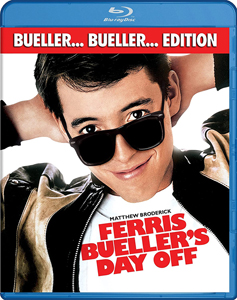
8. “Ferris Bueller’s Day Off” (1986, w-d)
It’s fascinating that “Ferris” is as good as it is. Matthew Broderick’s title character doesn’t have an arc. Traditionally, this story would be told from the point of view of Alan Ruck’s Cameron as he soaks up his friend’s lessons about living life on your own terms. Also, Ferris should be annoying. He literally turns to the camera and lectures us. He gets away with everything, touched by some unexplained magic. He shouldn’t even be cool; Broderick has more of a nerd look. Yet that “I don’t give a rip” attitude – combined with Ferris generally being a good boyfriend, friend and brother – is so appealing that we like him, and this movie. After all, the villain of the piece is the School System. Sometimes fictional wish fulfillment is healthy.
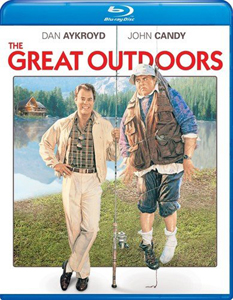
7. “The Great Outdoors” (1988, w)
There’s no gristle or fat on this screenplay, which Hughes practically writes in shorthand, as if he figures viewers understand the family vacation formula from the Griswolds’ “Vacation” misadventures. That’s a good thing in a way. This was easily the Hughes film I watched most as a kid, because it’s absurdly quotable (“No one’s blowing anything out their ass”) and there’s no plot to get in the way. The arguable downside: Jokes trump character development. Notice how thin the teen son’s story ends up being. But when you have Candy waterskiing and chased by a bear – and being irked by an on-point Dan Aykroyd as his brother-in-law – it’s hard to blame Hughes and director Deutch for leaning toward laughs.
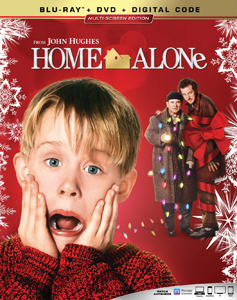
6. “Home Alone” (1990, w)
“Home Alone” is a success story we won’t likely see again. “Rocky V” was supposed to be the holiday hit, but instead it was this original idea about a kid stuck protecting the family home from burglars. It played in theaters for months and made Hughes and director Chris Columbus rich. Kids about the age of Kevin (Culkin, coming over from “Uncle Buck”) find being home alone scary; parents find leaving their kids behind terrifying. It’s a cathartic film for both demographics as Hughes gets this stuff out in the open while also letting us laugh. The violence is still somewhat controversial, but “Home Alone” follows the “banana peel rule.” Violent stuff happens to Marv and Harry (the brilliant Pesci and Stern), but they always get back up. Thus we’re allowed to laugh.
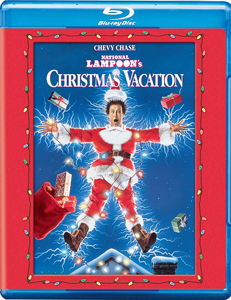
5. “Christmas Vacation” (1989, w)
It’s almost impossible to choose between this and “Vacation” as the best “Vacation” film, and this and “Home Alone” as Hughes’ best Christmas film. So I won’t quibble if you rank them differently. Chase again brings his A-game as Clark Griswold, now tormented by things that would later be “Simpsons” jokes – huge Christmas trees and stepped-on objects whacking him in the face. This is a relatively loose screenplay from Hughes, but no less funny for it because Chase’s improv game is so good. Witness his conversation with the lingerie counter girl. Also, two words: Randy Quaid. OK, two more: “Shitter’s full!”

4. “National Lampoon’s Vacation” (1983, w)
Helped by Chase at the height of his powers, Hughes delivers an on-point portrayal of a dad who wills a summer family road trip into being a good time – even though it objectively never is. Everyone is perfectly cast, with Beverly D’Angelo playing the supportive wife and Hall and Dana Barron as the best-ever Rusty and Audrey (unfortunately, the siblings are constantly recast in the sequels). It’s amazing what “Vacation” gets away with – animal and aunt cruelty – by being funny and heartfelt overall. For all the swearing and hijinks, there’s nothing purer than a father wanting to get his family to Wally World to create lasting memories.
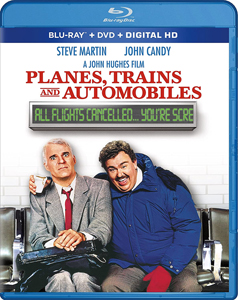
3. “Planes, Trains and Automobiles” (1987, w-d)
Just looking at a still image of Candy and Steve Martin sitting in that burned-out car makes me laugh out loud. The two comedy legends are pure gold playing off each other. And Hughes, of course, had shown a knack for the comic absurdities of cross-country travel with “Vacation.” So in a way, “PT&A” is an obvious idea. But it ends up being a multi-layered epic with a screenplay – to quote Candy’s Del – that’s “tighter than Tom Thumb’s ass.” This is hard to beat as a Thanksgiving movie, because Hughes cracks the code: It’s about the quest to get home for the holiday. Once you’re at the dinner table, it’s just another Turkey Day TV episode. But before that you can experience the original meaning of the day: friendship among wildly different people.
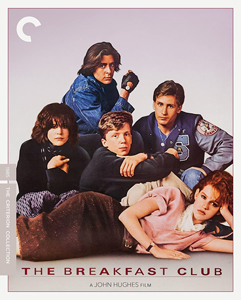
2. “The Breakfast Club” (1985, w-d)
“The Breakfast Club” should be boring. It is, after all, about five students spending eight hours in detention. But Hughes hits on something that’s obvious upon reflection: Detention is the only place where students of different cliques interact. And because they won’t mingle otherwise, they oddly – but believably — open up to each other here. Hughes taps into that precise point of emotional development between childhood and adulthood. The acting is so good – special shout-out to Emilio Estevez giving the most powerful speech ever about butt-cheek taping – that we wouldn’t dream of minimizing these teens’ problems. They’re quite aware of what they’re going through.
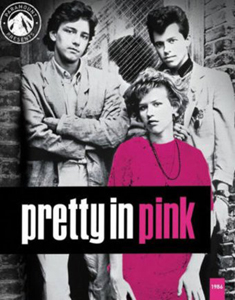
1. “Pretty in Pink” (1986, w)
Helped by Deutch in a remarkable directing debut, this is where Hughes crystalizes his statements about high school life – the constant ennui that is nonetheless beautiful when reflected upon. The film’s bittersweet nature applies to every character. I watch it as the story of Ducky (John Cryer), but many women relate to Andie (Ringwald). Deutch wisely caps many scenes with wistful smiles. This has the deepest soundtrack of any Hughes film, bookended by the Psychedelic Furs’ title track and Orchestral Manoeuvres in the Dark’s “If You Leave.” It’s Hughes’ most influential high school film, with “Dawson’s Creek” being the most obvious antecedent. “Pretty in Pink” gets lumped in with his other teen classics as a thematic bunch. But watch closely and you’ll see this is Hughes’ most flawless gem.

